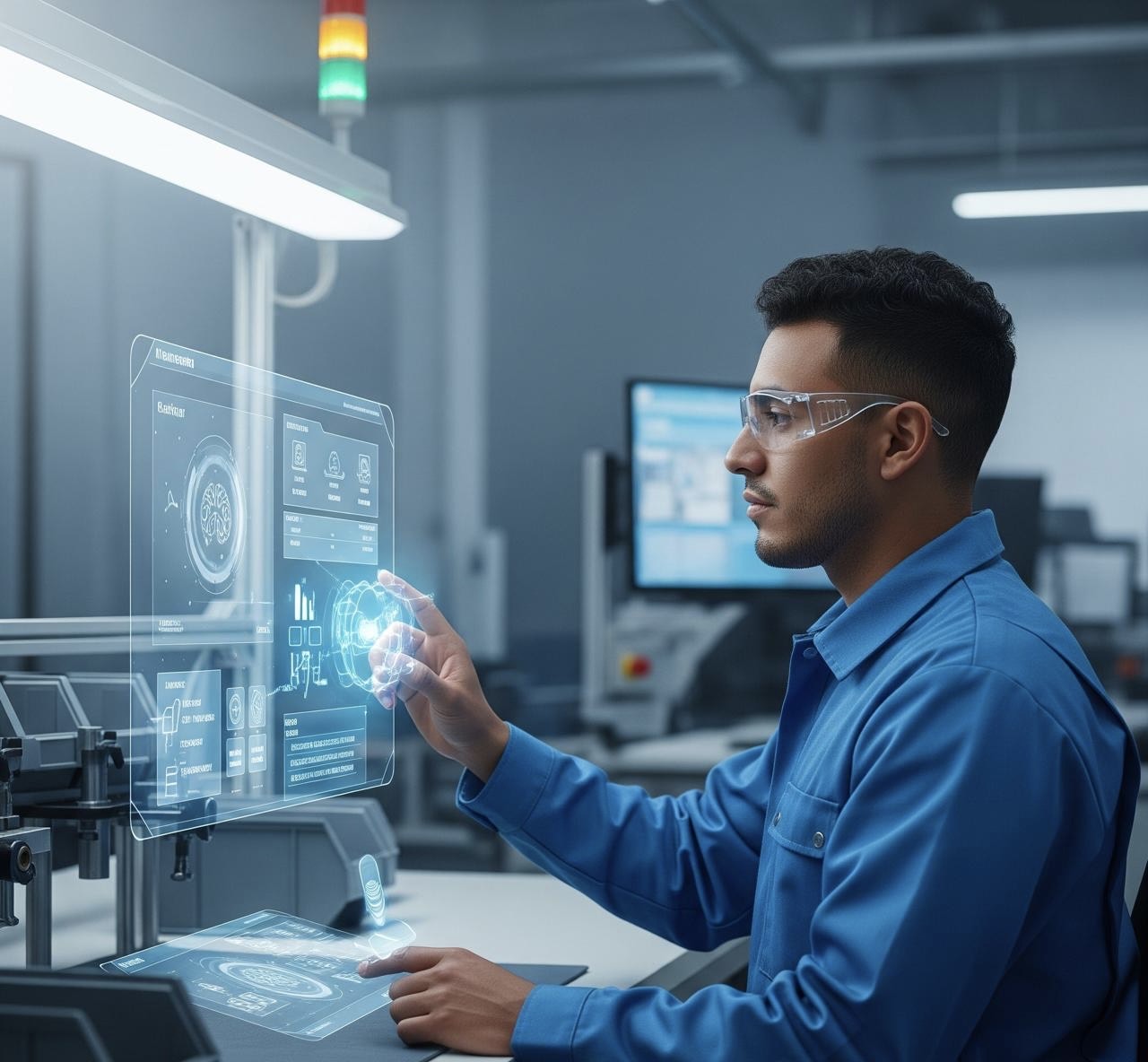
Neuroscience Meets the Factory Floor
Cognitive Ergonomics in Design and Workflow
By: Destiny Dickerson
In the era of smart manufacturing, efficiency isn’t just about automation and robotics; it’s also about how humans interact with machines, systems, and their environment. While traditional ergonomics has long focused on physical strain and safety, a new frontier is gaining attention: cognitive ergonomics. Rooted in neuroscience, this field examines how mental processes, such as attention, memory, and decision-making, influence human performance on the job.
As factories continue to evolve into more technologically integrated spaces, understanding the mindset of the worker is just as critical as maintaining the machines.
What Is Cognitive Ergonomics?
Cognitive ergonomics examines how cognitive functions, like perception, reasoning, and motor response, interact with system design. This approach poses more profound questions about how workers perceive and interpret information, manage stress, adapt to change, and prevent errors.
For example, how much information can an operator process at once without becoming overwhelmed? What kind of visual cues or auditory alerts reduce mistakes during high-stakes tasks? How can we structure workflows to reduce mental fatigue by the end of a shift?
These are the questions cognitive ergonomics seeks to answer, and they’re becoming increasingly relevant on the modern manufacturing floor.
The Brain on the Line: Common Mental Stressors in Manufacturing
Manufacturing environments are fast-paced and demanding. Workers are often required to multitask, follow complex protocols, and remain vigilant for long periods. Cognitive overload, distractions, or poorly designed user interfaces can lead to costly errors or even injuries.
For instance, poorly labeled control panels or inconsistently designed dashboards may force workers to rely on memory or guesswork. Repetitive tasks without variation can lead to reduced focus, while excessive alerts or flashing screens can contribute to “alarm fatigue.”
These mental stressors don’t just affect performance; they also affect well-being, leading to burnout, disengagement, and high turnover rates.
Designing for the Mind: Practical Applications of Cognitive Ergonomics
Manufacturers who incorporate cognitive ergonomic principles into their factory design are reaping the benefits of fewer errors, better morale, and higher productivity.
Some of the most effective changes include:
- Intuitive control interfaces that simplify complex systems through clean visual layouts, color coding, and consistent icons. These features enable operators to understand what is most important at any given moment quickly.
- Augmented reality (AR) technology that overlays real-time instructions or data into a worker’s field of view, reducing the mental burden of remembering steps or switching between devices.
- Task rotation strategies that alternate between mentally demanding and physically engaging roles help workers maintain focus and reduce fatigue throughout their shifts.
- Reducing noise and visual distractions by studying how the brain processes stimuli in high-stress settings. Calmer environments lead to clearer thinking and faster reaction times.
- Error-proofing systems (also called poka-yoke) are built directly into machines or processes. These systems prevent mistakes by guiding workers or automating critical steps before errors occur.
Why This Matters Now
The manufacturing sector is facing a perfect storm: labor shortages, increasing automation, and rising pressure to maintain accuracy and speed. As these pressures mount, manufacturers must reassess the human aspect of production. Machines can perform complex tasks, but humans still oversee, troubleshoot, and innovate within the system.
Cognitive ergonomics ensures that workers are not left behind in the push for more intelligent factories. Instead, it creates an environment where workers are supported both mentally and physically, making factories not only more efficient but also more humane.
The Future of Work Is Neuro-Aware
Manufacturing success in the coming years won’t just be measured in units produced or hours saved. It will be measured by how well humans and machines can work together. Companies that embrace the science of cognitive ergonomics are already seeing fewer errors, lower turnover, and a more adaptable workforce. The factory floor of the future isn’t just automated; it’s brain-friendly.
Sources
- International Ergonomics Association. “Definition and Domains of Ergonomics.”
https://iea.cc/what-is-ergonomics/ - Ergonomics in Design. “Designing for the Mind: Cognitive Ergonomics in the Workplace.” Human Factors and Ergonomics Society.
https://journals.sagepub.com/home/erg - Human Factors and Ergonomics Society. “What Is Human Factors and Ergonomics?”
https://www.hfes.org/resources/what-is-human-factors-and-ergonomics - Stanton, N.A. et al. (2017). Human Factors Methods: A Practical Guide for Engineering and Design. Routledge.
https://www.routledge.com/Human-Factors-Methods/Stanton-Salmon-Walker/p/book/9781472439242